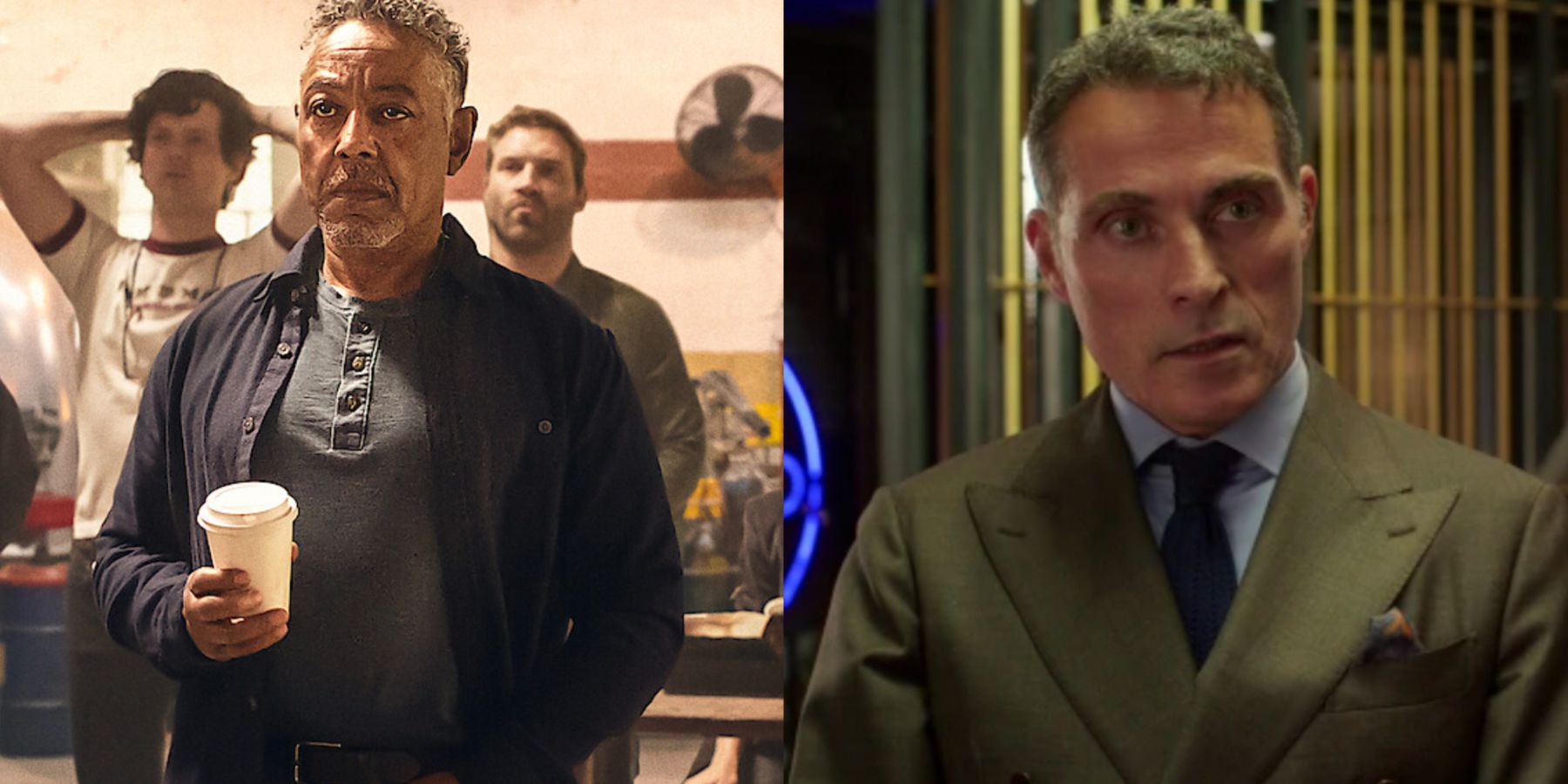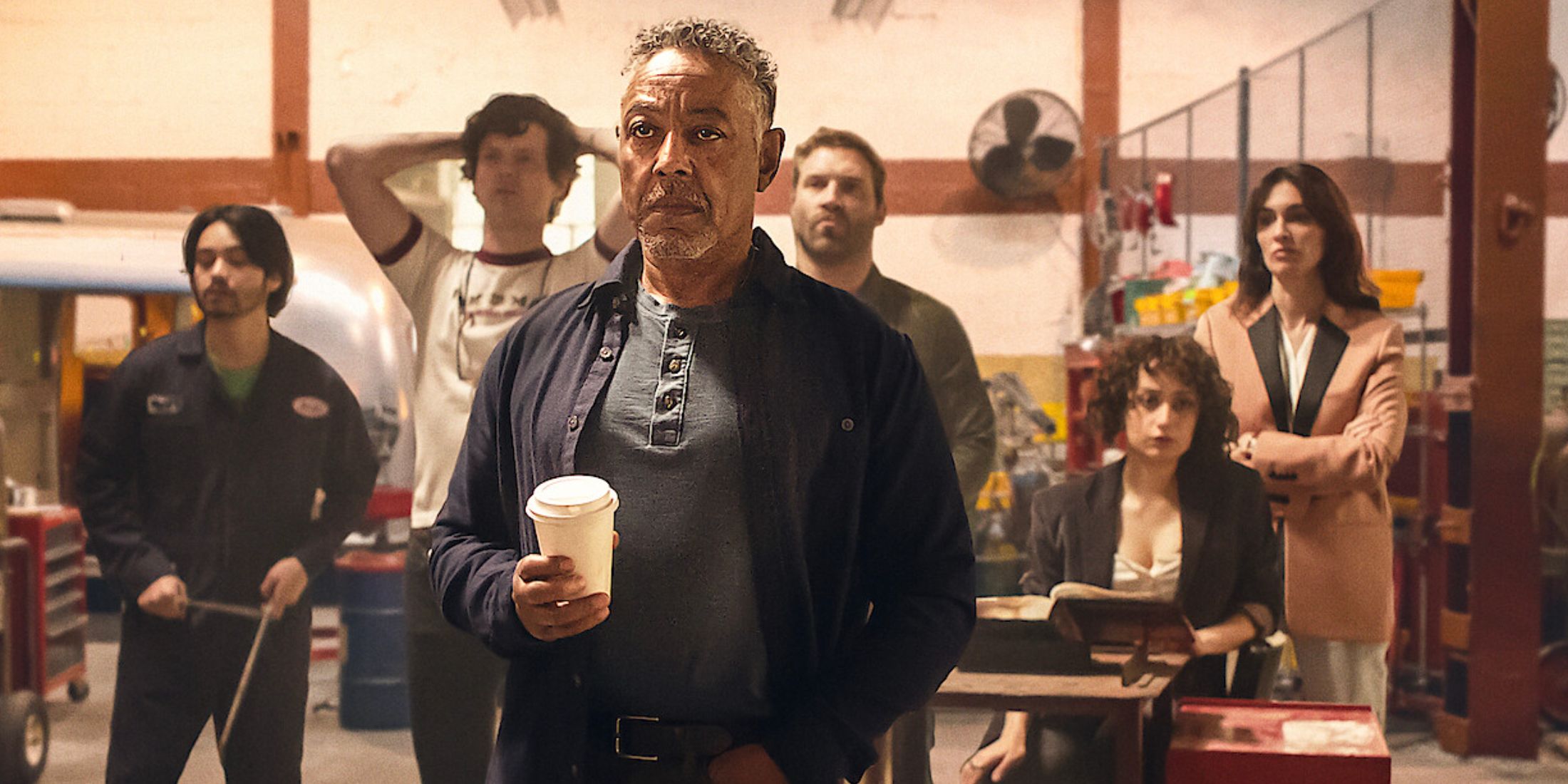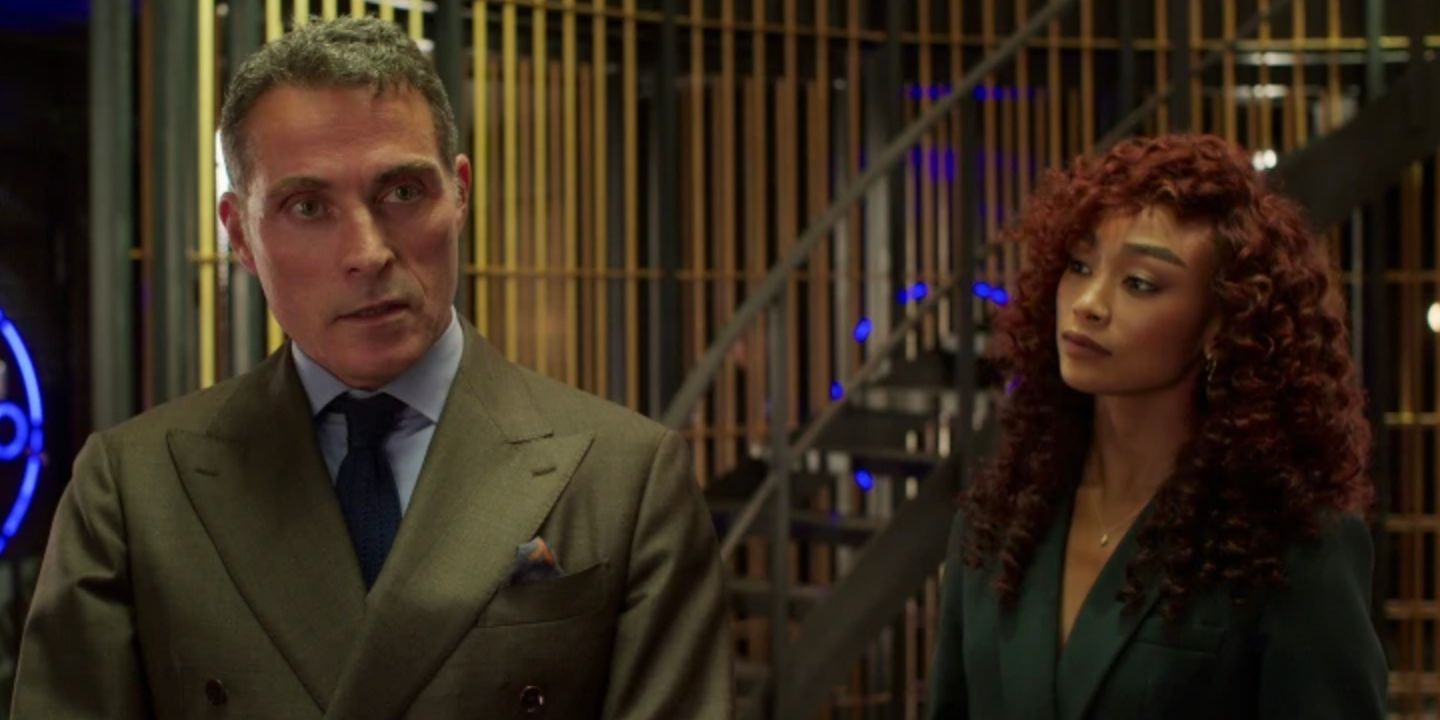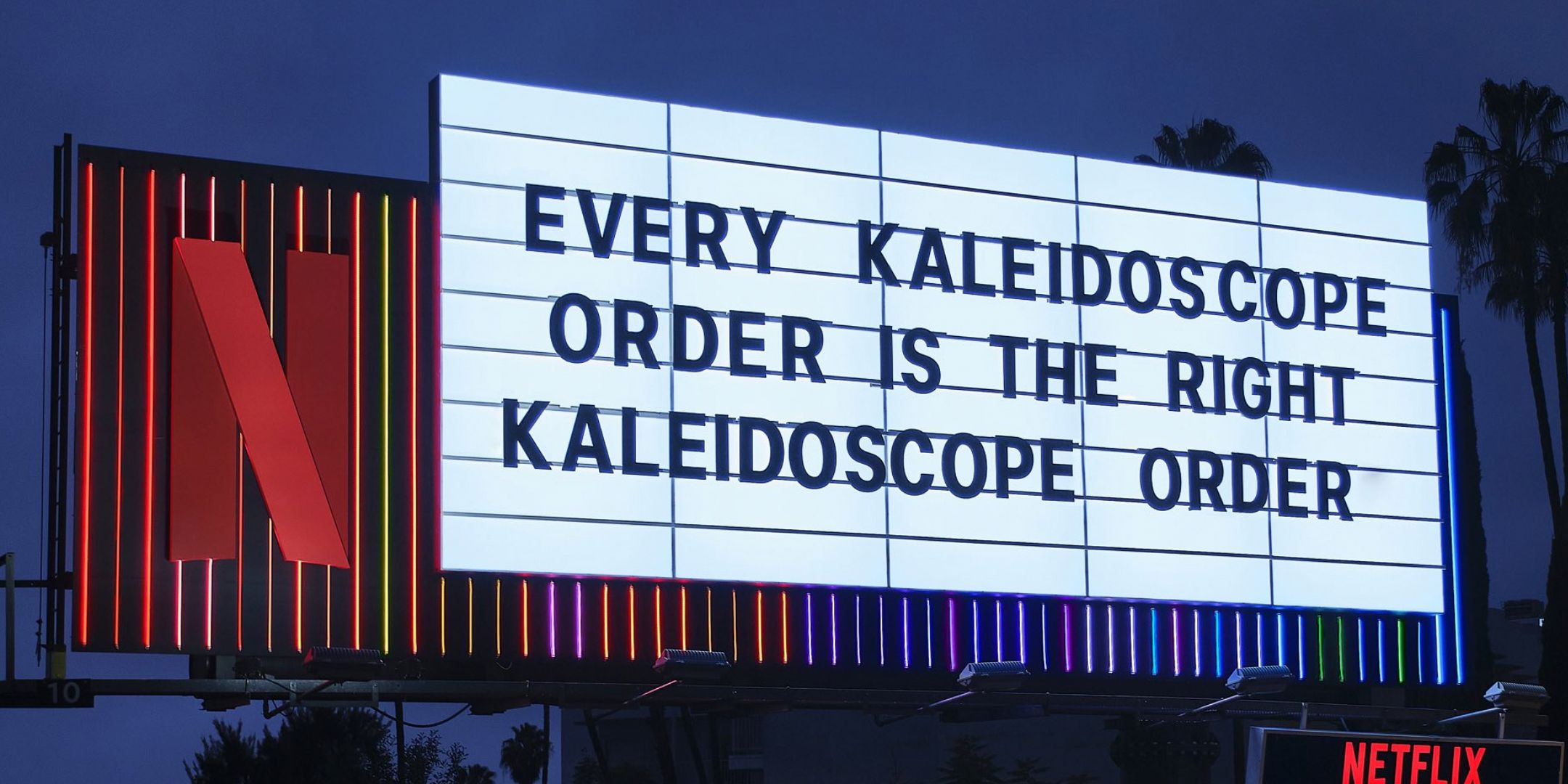These days, Netflix might be in a little hot water with streaming audiences because Netflix has canceled a lot of series at just one or two seasons in, but the streamer keeps producing new content as well. One of those pieces of new content is the eight-part limited series known as Kaleidoscope, which has an unusual twist on the binge model: the series can be consumed in any order.
Kaleidoscope is able to feature nonlinear storytelling because each episode is only a small piece of the larger heist puzzle, and each episode details exactly when it takes place as the episode opens. Written by Eric Garcia, and starring Giancarlo Esposito, Paz Vega, and Rufus Sewell, the series invites streaming audiences to choose their own order, or to watch the series in the episode Netflix chooses for them.
What Is Kaleidoscope About?
The series follows Ray Vernon AKA Leo Pap (Esposito) as he puts together an elaborate heist and tries to bring the perfect team together to pull it off. The story itself spans 24 years and is inspired by real events. During the 2012 storms of Hurricane Sandy, stocks and bond certificates were damaged by flooding as they sat in a vault. This series wonders if an event like that could have been purposeful instead of the fault of the weather. It's less for fans of the traditional whodunnit mysteries and more for fans who are ready to explore the different character types presented.
Esposito plays the mastermind while he recruits characters played by Vega, Rosaline Elbay, Jai Courtney, and Peter Mark Kendall. The plan is elaborate, and with the episodes breaking up the preparation for the heist into different episodes, the audience gets a full look at how the heist will work, but also at how the personalities of the central players clash as they seek to pull off the $7 billion job. Of course, as the show reminds the audience, a big job like that isn’t necessarily only about the money.
How Does Kaleidoscope Work?
Instead of the episodes being numbered, each episode of Kaleidoscope is named for a color. The idea is that the different colors are just like the colorful pieces of the titular kaleidoscope, put together to create a new picture depending on which color the audience starts with. That’s true since the audience will have one impression of some characters if they start from an early timeline episode like “Green,” but a different one if they start on a later timeline episode like “Pink.”
When beginning to watch Kaleidoscope though, Netflix’s first “episode” is always going to be “Black.” That is the episode that is essentially an announcement from Netflix to explain that the episodes don’t have to be viewed in any particular order. The viewer is free to curate their own experience if they wish.
Netflix chooses a default viewing order for the streaming, but it appears to be region based. While one person in one part of the world might start on the episode “Yellow,” beginning the story six weeks before the heist takes place, another might start the story in a completely different point in the timeline. Viewers don’t have to follow Netflix’s order though as they’re also able to choose the episodes they want to watch by opening up the show’s episode list. That has left a lot of interested viewers wondering just which episode they should start with, and which path to follow for the story.
What Is The Best Order To Watch Kaleidoscope?
Realistically, the episode order for Netflix’s Kaleidoscope doesn’t matter since each episode is explicit with where it falls in the show’s timeline. Viewers are able to organize the timeline in their own mind since each episode is a particular time period. Just which order is best is really up to what kind of experience the viewer wants to have. It has to be said, however, that if a viewer starts with the heist itself, or the episodes that take place after the heist, some of the twists and reveals will already be known to them, which might lessen the experience.
To maximize the story impact, however, it is best to start the show with “Green” and end the show with “White” or “Pink.”
Chronologically, “Green” isn’t the beginning of the show. That honor actually goes to “Violet,” but “Green” introduces almost all of the major players in the story in a way that gives the audience just enough information about them to leave them wanting more. It also sets up some of the most important relationships that inform the events of the series, like Stan’s (Kendall) loyalty to his cellmate Ray, and Ray’s contentious relationships with both his former partner and his daughter. “Green” largely focuses on Esposito’s character, and as a result, all of the pieces of the puzzle stem from him.
“White” details the actual events of the heist while “Pink” reveals what all the major players are up to six months later - and tells the audience how everyone’s story ends. A few story points are left ambiguous for the audience in “Pink” though, so it might be more satisfying for the audience to end on “White,” as the writer of the show originally intended. The rest of the timeline, after all, gives the audience clues to just how the heist will go down, making “White” the real payoff.
To follow the emotional journeys of the characters, watching most of the series in order with a well-placed flashback episode gives some great tension to the story:
“Green” (7 years before the heist)
“Yellow” (6 weeks before the heist)
“Orange” (3 weeks before the heist)
“Blue” (5 days before the heist)
“Violet” (24 years before the heist)
“Red” (the morning after the heist)
“Pink” (6 months after the heist)
“White” (the heist)
If the audience wants to watch Kaleidoscope in chronological order with a more linear story approach though, that order is:
“Violet” (24 years before the heist)
“Green” (7 years before the heist)
“Yellow” (6 weeks before the heist)
“Orange” (3 weeks before the heist)
“Blue” (5 days before the heist)
“White” (the heist)
“Red” (the morning after the heist)
“Pink” (6 months after the heist)
Kaleidoscope is currently available to stream in its entirety on Netflix.




